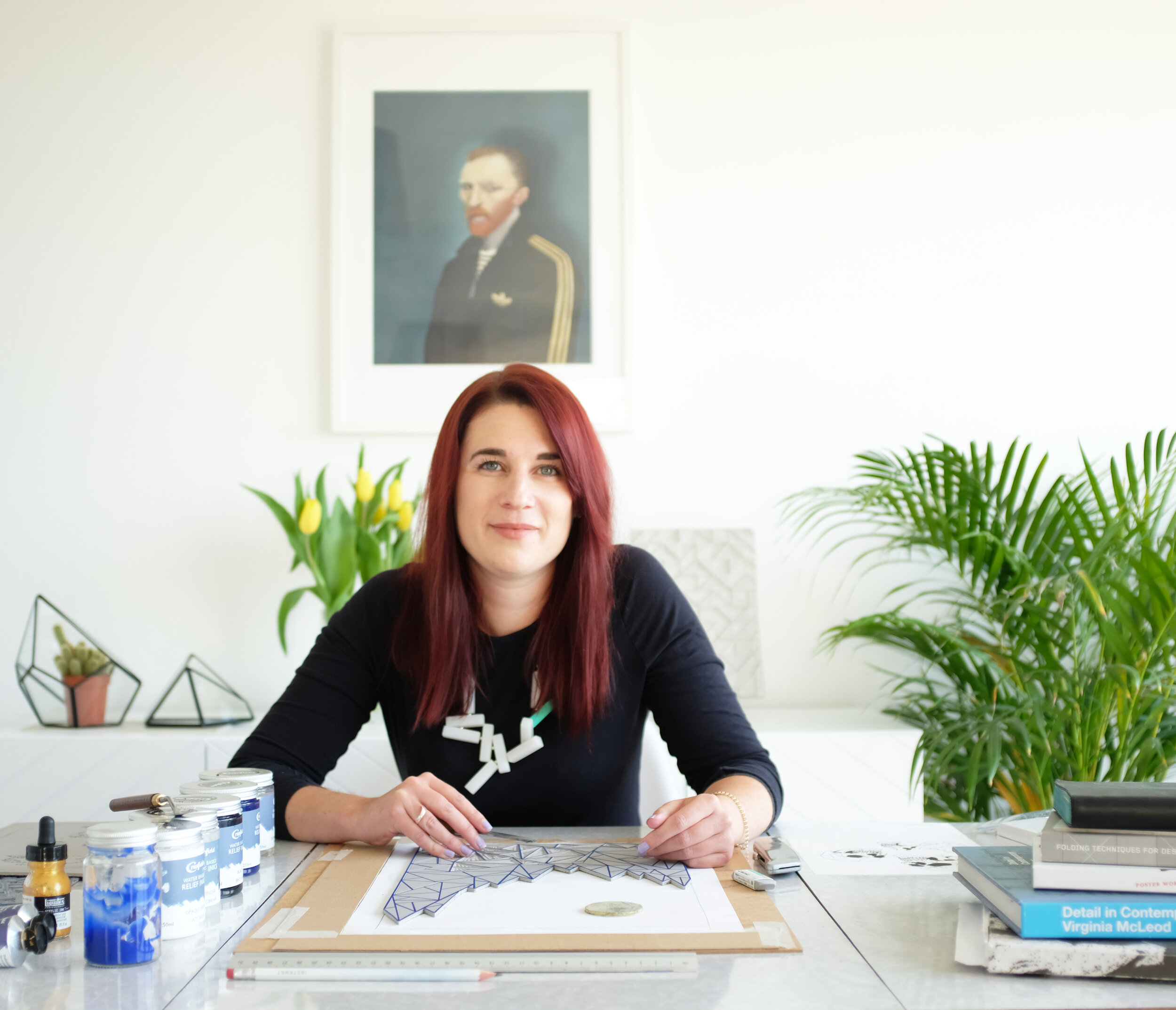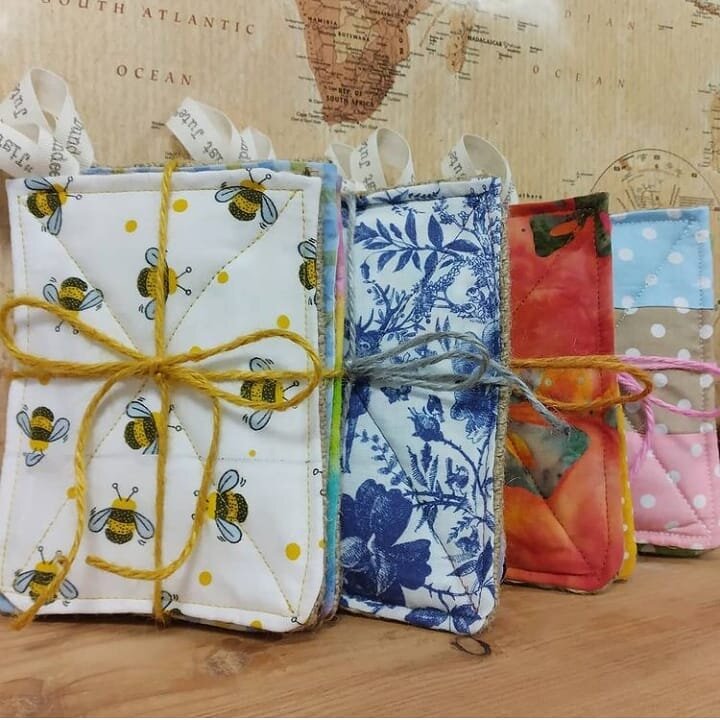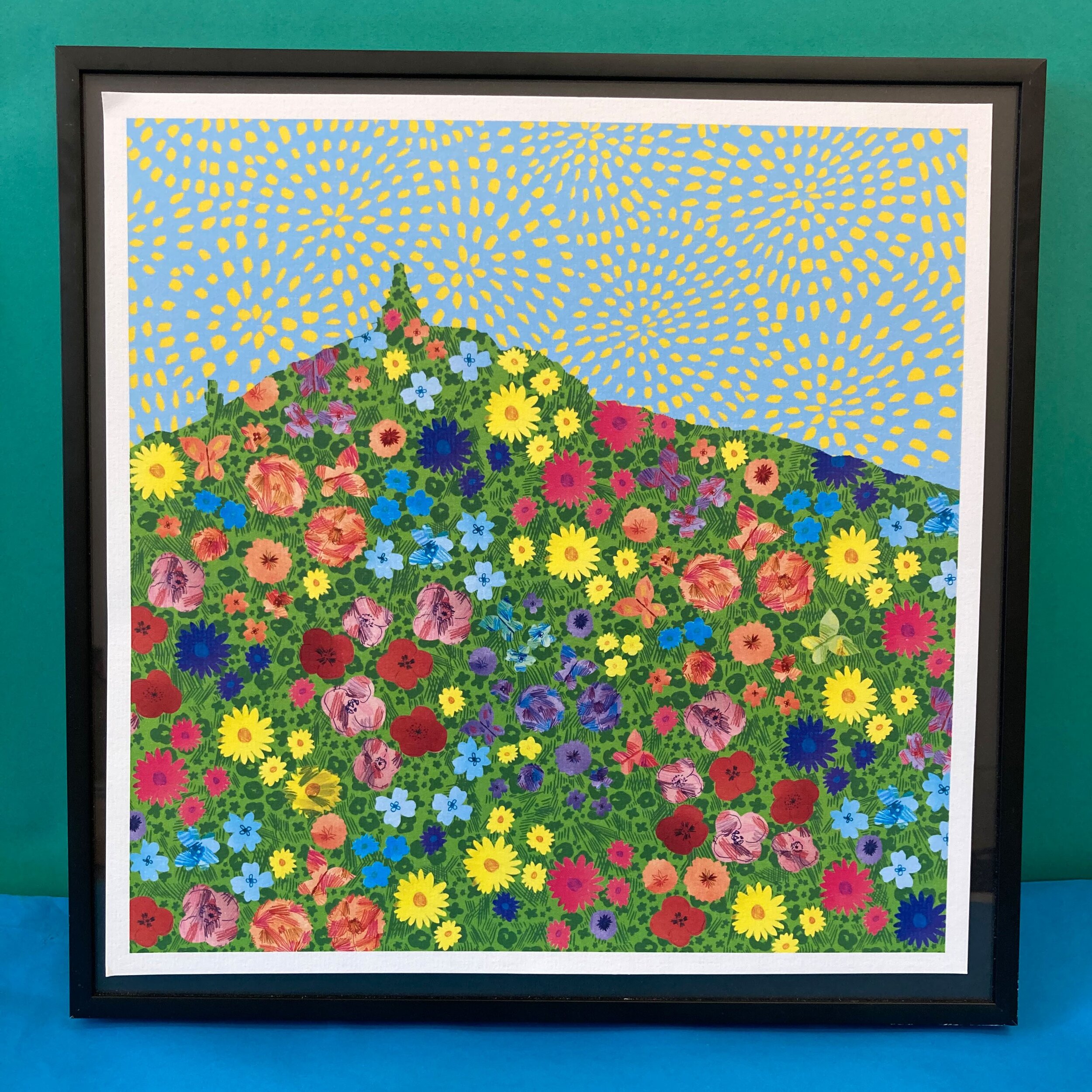ZITA: first of all, thank you for accepting my invitation, i'm really happy to have you here as i'm really impressed with your work. could you tell a little bit about yourself, what you do and how you got there?
LOUISE: hi! i'm louise kirby, a local designer, i'm based in dundee and i've got a studio in dundee at wasps studios. i create bespoke print and patterns that ultimately captures a sense of place - within in all my work i like to bring out the positives and bring really meaningful and unique imagery that relates to the local spaces or briefs that i'm working on. my work is on quite a range of different things and i apply it to really small scale things as well as larger, public art, mural types of works as well. but in everything i do has this playfulness to it. my background is in textile design so my work has this kind of playful textile influence to it - i try and capture a sense of place with it but also the particularities of the brief i'm working towards. and how i got there..?
ZITA: yes! please tell a little bit about your journey too.
LOUISE: i studied printed textiles at duncan of jordanstone (DJCAD), but i graduated in 1999 so it was over 20 years ago now. i absolutely loved printed textiles and i was completely on fire. from when i started my first block, when i first discovered printed textiles i just absolutely loved it. as soon as i graduated i went to london and worked for a fashion design studio where i was coming up with print ideas but it was following trends and very much fashion related. i really liked working at that fast pace and constantly changing briefs, that we had to constantly come up with new ideas. then i moved back to scotland and just continued freelancing for the same design studio. then i took a little bit of time out and went travelling for a year - which i really recommend to everyone! i was really lucky, when i was in australia i decided to approach one of the design studios so i ended up doing some work for them too, john kaldor fabricmaker ltd. in sydney. i was only doing it for a couple of months but it was a great experience - and the design studio knew my work because they bought my designs before just through the fashion industry.
ZITA: wow!
LOUISE: when i came back i really wanted to just work out what i'm doing and where i'm going, so i decided i wanted to create my own label then. i created printed scarves on silk and wool, hand screen printed or monoprinted, and i would make them myself. this was really high-end, gallery type stuff and i did some shows with that, but i didn't just want to keep making things, and i did another "big review" about where i'm going and what i'm doing, and i got a little bursary to do some research and self development. i was always kind of worried about just making things and keep adding stuff to the world - i didn't just want to do that. i guess what i'm good at is coming up with ideas and working towards briefs, and i wanted to be able to apply that. and that's when i was starting working on more of these illustration type things and different briefs, and also seeing my work helped me think about how patterns can be applied not just onto textiles but murals and different scales. with most of my designs, i guess i really wanted to be purposeful, to be doing a job that improves space, i guess making a difference, in a way.
ZITA: that's really fascinating, and your journey is fascinating! you know it's funny because i took quite the opposite way. ok, i didn't start from illustration but from graphic design, it was more typography and logos, but then it was from that i discovered pattern, and printed textiles. whereas you started with that and then expanded. it's really interesting to see. i really love what you say about the sense of place and it is quite literal in some of your work when you do the murals. i'm really interested in those projects! i'm researching a lot about new towns such as glenrothes and i love the concept of a town artist. when you talk about improving a place and making a difference, i always think about those so i'm really wondering how these projects found you, and where we can see them in your work?
LOUISE: i guess when i come across a brief like that, i always think about, what is meaningful and unique about that particular place and focus on bringing out all those positives. how i found them... i guess it's either through open calls or you just see the commissions advertised, or maybe i've worked with people before and they know my work. an example of this is the scrapantics mural that was an open call for artists, which is on concertina doors - it's three or four metres tall and i had to use scaffolding. for me, thinking about the sense of place was about what that shop was about. scrapantics is a reusables store, a bit of an aladdin's cave of lots of different things. so i used my patterns and layering, that kind of juxtaposition of my style as a metaphor of what's inside that store, that kind of clashing and mixing things together and bring that out to the street, and just bringing some joy into the street.
ZITA: beautiful!
















